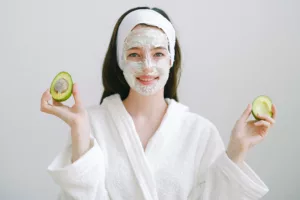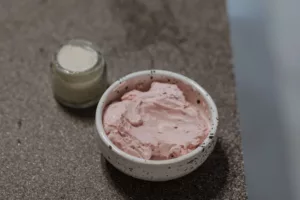A Guide to Clean Beauty

In recent years, the beauty industry has witnessed a remarkable shift towards clean and natural products. Consumers are increasingly seeking alternatives that are free from harsh chemicals, toxins, and potentially harmful ingredients. This movement toward clean beauty isn’t just a trend; it’s a commitment to safer, more sustainable beauty practices. In this comprehensive guide, we’ll delve into the world of clean beauty and provide you with the knowledge you need to make informed choices when selecting natural products for your skincare and beauty routine.
What Is Clean Beauty?
Clean beauty is a term that signifies products made with a focus on purity and safety. It encompasses skincare, makeup, haircare, and more. Clean beauty products prioritize:
- Natural Ingredients: Clean beauty products use natural and organic ingredients, often sourced sustainably. These ingredients are minimally processed and free from synthetic additives.
- Transparency: Brands that adhere to clean beauty principles are transparent about their ingredient lists, sourcing practices, and manufacturing processes. This allows consumers to make informed decisions.
- No Harmful Chemicals: Clean beauty products avoid harmful chemicals such as parabens, phthalates, sulfates, and synthetic fragrances, which are often associated with health concerns.
- Cruelty-Free: Clean beauty brands are often cruelty-free, meaning they do not test their products on animals.
Understanding Clean Beauty Labels
When shopping for clean beauty products, you’ll come across various labels and certifications that can help you identify trustworthy options. Some common labels include:
- Certified Organic: Products with this label contain organic ingredients certified by a reputable organization, such as the USDA.
- Cruelty-Free: Indicates that the product and its ingredients were not tested on animals. Look for recognized cruelty-free certifications like Leaping Bunny or PETA.
- Vegan: These products do not contain any animal-derived ingredients. Vegan certifications ensure that no animal by-products are used.
- Non-Toxic: While not an official certification, this label suggests that a product avoids potentially harmful ingredients. However, it’s essential to read the ingredient list to confirm.
- EWG Verified: The Environmental Working Group (EWG) verifies products based on their ingredient safety and transparency.
Ingredients to Embrace in Clean Beauty
Clean beauty products are enriched with nourishing ingredients that are safe and beneficial for your skin. Here are some natural ingredients to embrace:
- Aloe Vera: Known for its soothing and hydrating properties, aloe vera is ideal for calming irritated skin and promoting healing.
- Jojoba Oil: This natural oil closely resembles the skin’s sebum, making it an excellent moisturizer for all skin types.
- Hyaluronic Acid: An exceptional hydrator, hyaluronic acid can hold up to 1000 times its weight in water, plumping and moisturizing the skin.
- Green Tea Extract: Rich in antioxidants, green tea extract helps protect the skin from free radicals and has anti-aging properties.
- Vitamin C: Known for its brightening effects, vitamin C helps reduce the appearance of dark spots and promotes a more even skin tone.
- Shea Butter: Shea butter is an excellent moisturizer and skin conditioner, providing long-lasting hydration.
Ingredients to Avoid in Clean Beauty
Clean beauty products steer clear of certain ingredients that are often associated with adverse health effects. Here are some ingredients to avoid:
- Parabens: These preservatives are linked to hormonal disruptions and are best avoided in skincare and beauty products.
- Phthalates: Found in fragrances and often hidden under the term “fragrance,” phthalates can interfere with hormone function.
- Sulfates (SLS and SLES): These harsh detergents can strip the skin of its natural oils, leading to dryness and irritation.
- Synthetic Fragrances: Artificial fragrances can contain hundreds of undisclosed chemicals. Opt for products with natural scents or essential oils.
- Formaldehyde-Releasing Agents: These preservatives can release formaldehyde, a known carcinogen, into the product over time.
- Mineral Oil and Petroleum: These ingredients can clog pores and may contain impurities.

Tips for a Clean Beauty Routine
Now that you understand the basics of clean beauty, here are some tips to incorporate it into your beauty routine:
- Read Ingredient Labels: Always read product labels to ensure they align with clean beauty principles. Look for simple, recognizable ingredients.
- Research Brands: Research brands to determine their commitment to clean beauty. Visit their websites, read reviews, and check for certifications.
- Patch Test New Products: Before using a new product on your face, patch test it on a small area of skin to ensure you don’t have an adverse reaction.
- Simplify Your Routine: Consider simplifying your skincare routine by using fewer products with high-quality ingredients. Clean beauty is often about less being more.
- Support Sustainable Brands: Choose clean beauty brands that prioritize sustainability, eco-friendly packaging, and responsible sourcing.
- Educate Yourself: Continue to educate yourself about clean beauty by staying informed about ingredients and industry developments.
Clean beauty is more than just a trend; it’s a movement that empowers consumers to make informed and responsible choices about the products they use on their skin. By understanding clean beauty principles, reading labels, and embracing natural, nourishing ingredients, you can transform your beauty routine into one that prioritizes health, safety, and sustainability. With clean beauty, you’re not just enhancing your beauty; you’re promoting a cleaner, healthier world.




